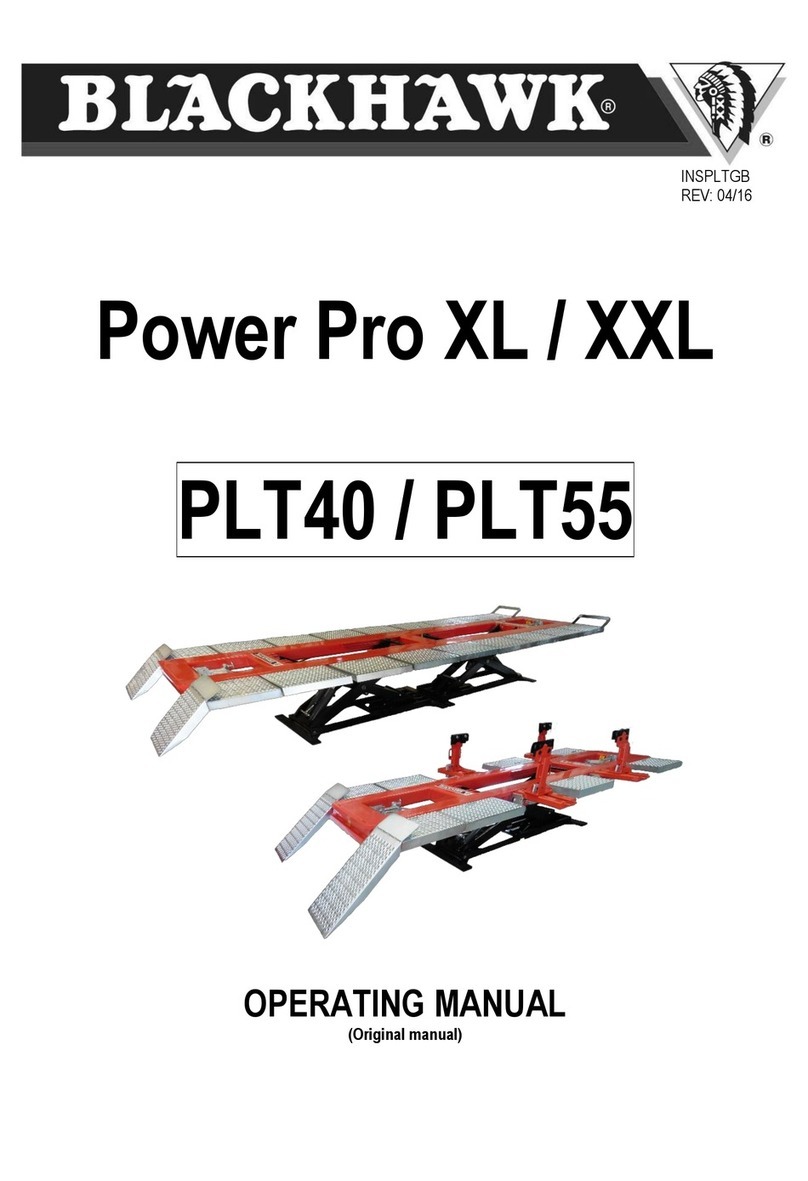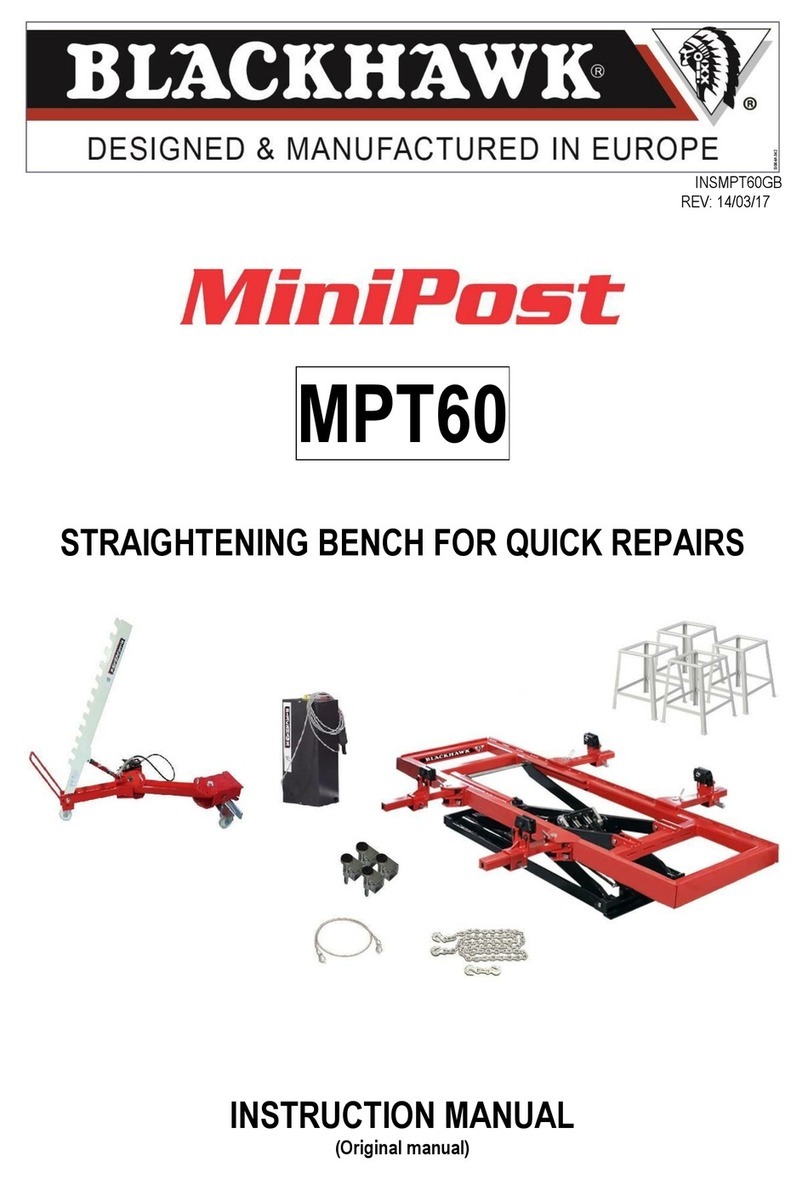
STL27 – STL28
3
I) CAUTIONS - SAFETY INSTRUCTIONS
The contents of this user manual only concern aspects relative to operation and to safety when installing the equipment.
To fully understand the terminology used in this manual, the person in charge of the installation should have specific
experience in production, service, maintenance and repair in an industrial environment, and have the competence to explain
the contents of the diagrams and descriptions to other people. Moreover, this same person should have knowledge of the
general and specific regulations covering safety applicable in the country where the lift is installed.
SAFETY
It is important to read this paragraph carefully as it contains important information on the risks to which the operator exposes
himself / herself by using the lift incorrectly. Please find hereafter the information to enable the user to avoid dangerous
situations.
WARNING
This lift was d sign d to lift v hicl s up and to maintain th m in a sp cific position in a cov r d workplac .
Any oth r us is forbidd n
In short, the lift is not suitable for the following uses:
-washing and spraying operations
-use as traction equipment
-use as a goods lift
-use in an area where there is a danger of explosion (spray booths, etc), except for special versions. (ATEX)
The floor on which the lift is placed should be sufficiently strong to support the weight of the lift, the load deck and the load,
with a safety margin of 25%;
The concrete floor must have a minimum thickness of 150mm and a minimum resistance of C20/25 (Norm EN206-1)
Any masonry work required should be studied by a design office and carried out by a masonry company, authorised to carry
out such work and projects.
The lift can be recessed into the floor (refer to the drawings covering the foundation works). The lift must be fixed using the
"rawlplugs" provided or equivalent anchors.
The manufacturer will not take into account any request for compensation for injury or material damage (vehicle or other
goods) in the event of improper and / or unauthorised use of the lift.
During raising and lowering the operator must remain inside the operating area (2) as defined in Figure 1. Entry into the
safety area (1) is strictly forbidden. The presence of a person under the vehicle is only authorised when the lift is in its fully
raised position.
Figure 1





























